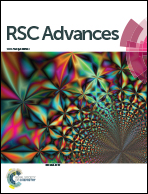Direct monitoring of the interaction between ROS and cerium dioxide nanoparticles in living cells†
Abstract
A method for the direct monitoring of the interaction of reactive oxygen species (ROS) with cerium dioxide nanoparticles (CDN) in living cells is proposed based on the use of a complex of calcein and CDN. The CDN–calcein complex penetrates easily into a living cell and is decomposed readily by endogenous or exogenous ROS, releasing brightly fluorescent calcein, which can be observed using conventional fluorescent microscopy. This complex is less cytotoxic than individual cerium dioxide nanoparticles and provides effective protection from oxidative stress induced by the action of hydrogen peroxide, treatment with latex beads, or infection by the vesicular stomatitis virus.


 Please wait while we load your content...
Please wait while we load your content...